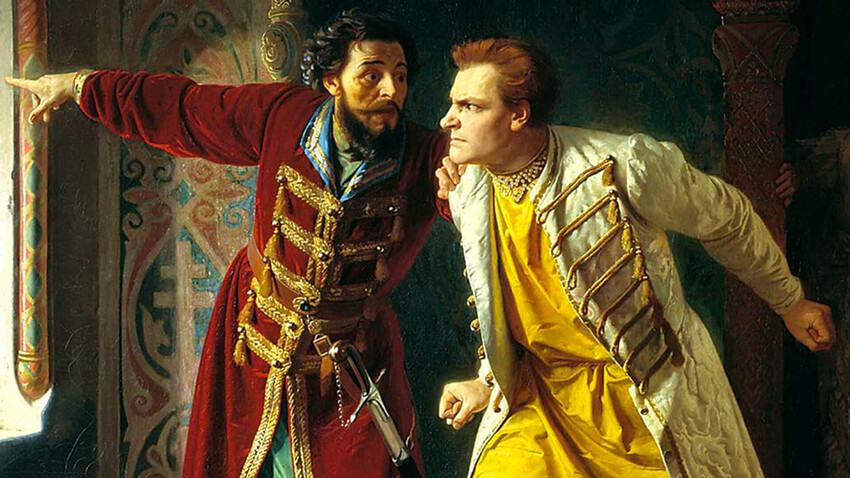
Carl Wenig. Last minutes of False Dmitry I, 1879
Nizhny Novgorod art museumIt all began in the small city of Uglich, which is now often cited as the city where the ‘Time of Troubles’ began.
Late 16th century. Ivan the Terrible is already dead and his son Fyodor, who has no offspring, is ruling the country. Rumors have it that Fyodor wasn’t able to rule himself, so Boris Godunov, his counselor, was actually in charge of many political questions.
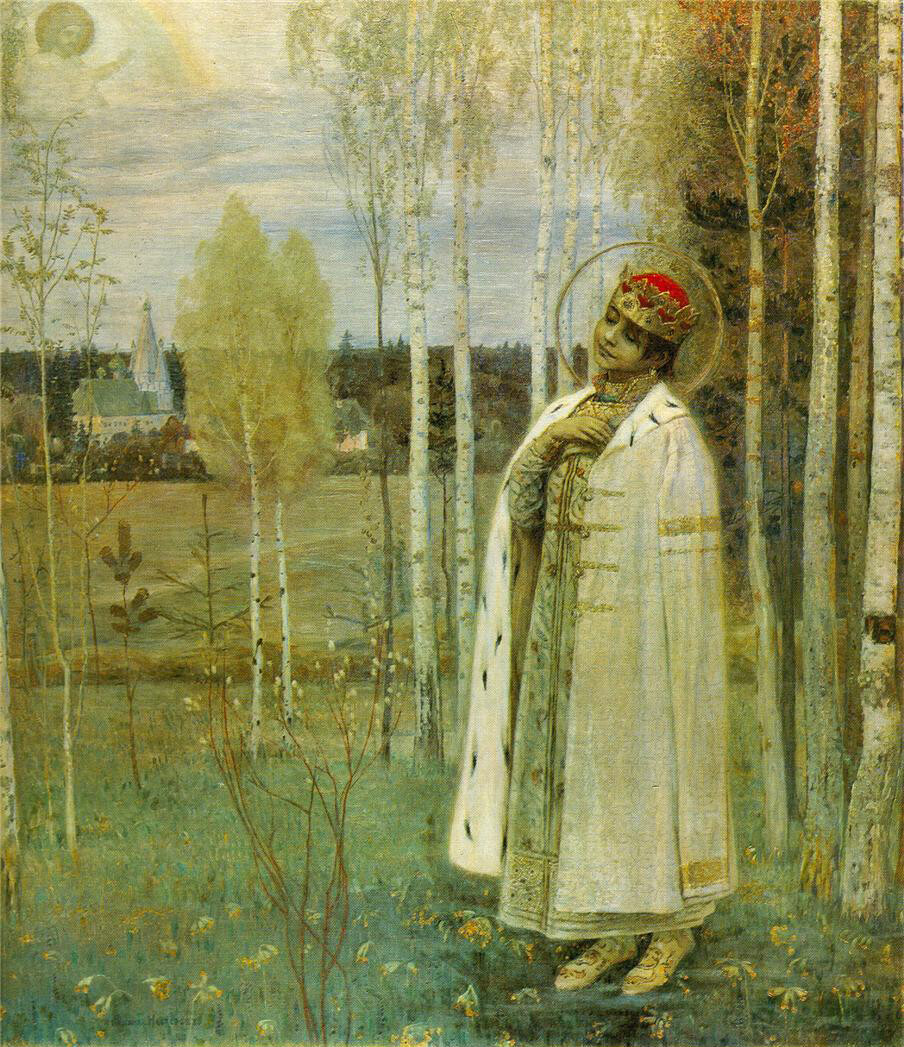
Mikhail Nesterov. Prince Dmitry, 1899
Public domainThe only remaining heir of the Rurikid dynasty was young Prince Dmitry, who was exiled to Uglich with his mother and her powerful family. Suddenly, in 1591 aged eight, he died, due to a neck stab wound. The circumstances surrounding his death were unclear, however. The official version approved by witnesses said he suffered an epileptic seizure while playing ‘svaika’, a popular folk game, where one has to throw a knife or a spire onto the ground.
However, another version immediately spread among folks. That it was Boris Godunov that had arranged the Prince’s murder in order to consolidate the whole power into his hands.
‘False Dmitry’ probably wouldn’t have succeeded if the political circumstances weren’t so complicated in Russia at the time. The elite (the boyars from the noble families) were vying with each other for power since Tsar Fyodor assumed the throne.
And their confrontations became even stronger after Fyodor’s death in 1598. That same year, Boris Godunov was elected as the new tsar by the assembly of nobility and feudals (‘Zemsky Sobor’), because many supported him.
Godunov's ruling had some successes in foreign policy, however, faced a deep economical and social crisis. As a result, the great famine of 1601-1603 was perceived by the devout Russian people as God's punishment for the sins of the new (and illegitimate?) tsar, who was not God's anointed, as all other tsars, but was chosen by mortals.
So, in this turbulent time, the appearance of the miraculously surviving Prince, the “true” heir of the throne, who would save the country… was exactly what everyone needed. The rumors that Prince Dmitry was actually alive, but hidden from his murderers, appeared even before the ‘False Dmitry’ appeared.
Throughout the centuries, historians have had several theories about who the real man who pretended to be Prince Dmitry was. Some believed it really was Dmitry, others thought he was a bastard of Polish King Stephen Báthory.
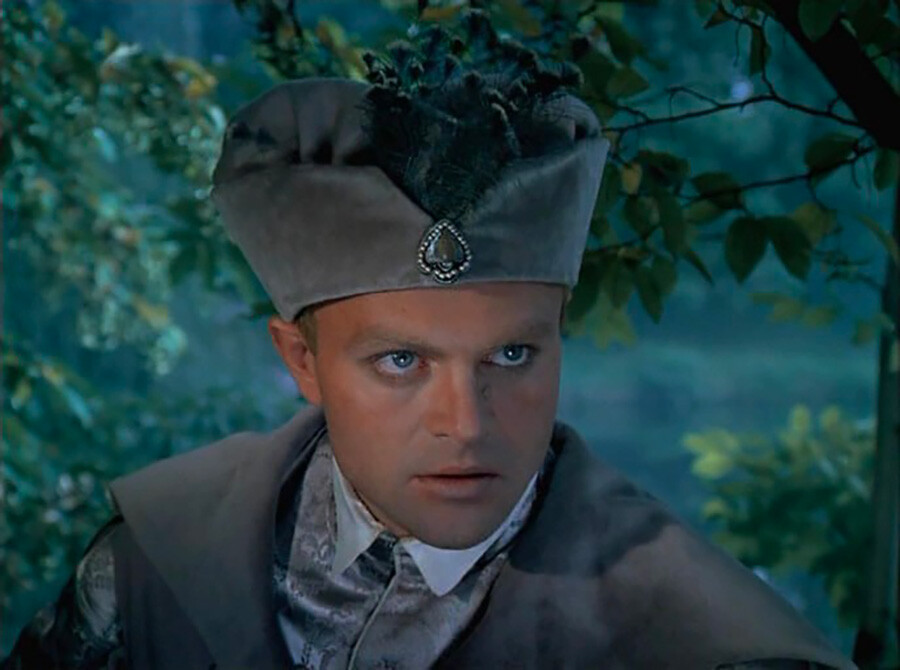
Actor Alexander Soloviev as False Dmitry in 'Boris Godunov' movie
Sergei Bondarchuk/Mosfilm, 1986However, one of the most widespread versions (also featured in Alexander Pushkin’s ‘Boris Godunov’ drama) is that ‘False Dmitry’ was a monk named Grigory Otrepiev from Moscow's Chudov monastery. He had Lithuanian origins and, before becoming a monk, he was a serviceman of a Romanov family member (those same Romanovs who later would become a ruling dynasty). And, as Boris Godunov was pursuing Romanovs so that they didn’t intrigue and take his power, Otrepiev decided to hide in the monastery. And the Chudov monastery was actually considered a prestigious one, with mainly aristocratic people serving God there.
Without feeling really safe in Moscow right next to Boris Godunov, Otrepiev fled to Kiev and then to Poland (part of the Polish-Lithuanian Commonwealth at that time). .
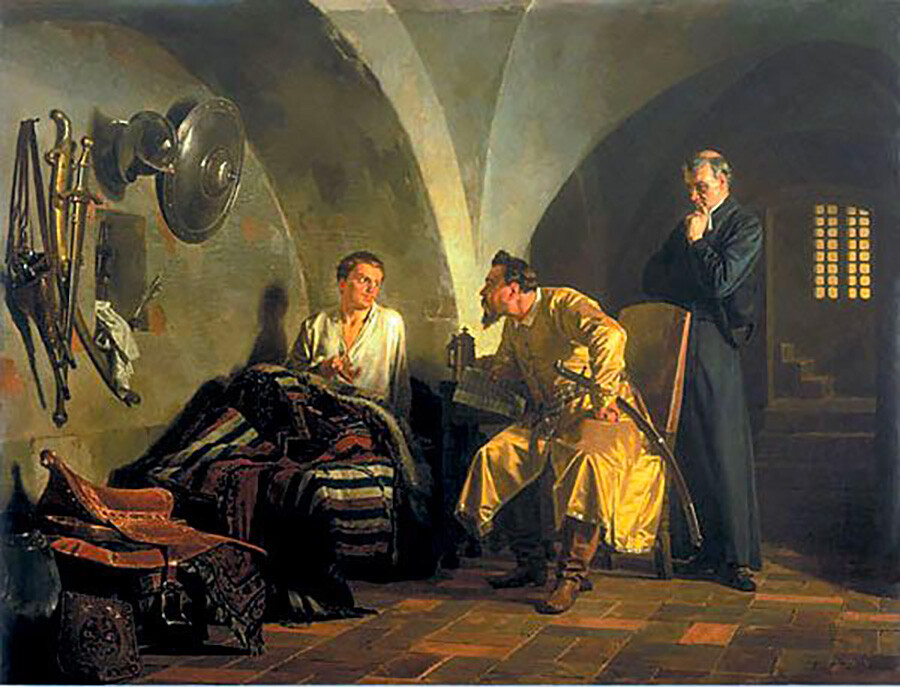
Nikolai Nevrev. False Dmitry I at Adam Wisniowiecki house, 1876
Public domainIn 1603, a Polish nobleman named Adam Wiśniowiecki “found out” that his new serviceman was actually the surviving Prince Dmitry. It's not clear if someone told him or if it was ‘False Dmitry’ himself who told him.
Wiśniowiecki introduced the young man to Polish King Sigismund III Vasa. He eventually recognized ‘False Dmitry’s claim to the Russian throne and suggested his help if, in case of success, he would grant Poland Western Russia's land.
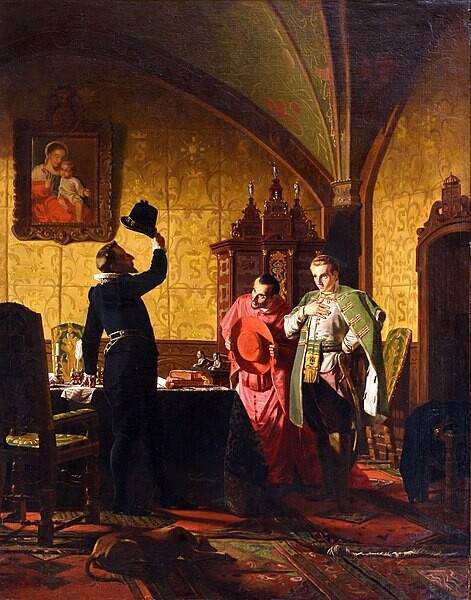
Nikolai Nevrev. False Dmitriy I swearing Sigismund III introduction of catholicism in Russia, 1874
Saratov art museum‘False Dmitry’ also promised to marry the military commander's daughter Marina Mnishek (their love and her role in ‘Time of Trouble’ is also a popular plot in culture). Supported by the army of Polish hirelings and Cossacks, ‘False Dmitry’ entered Russia. Several cities surrendered to him without a fight, while he also won several battles.
In the midst of the tsar army fighting ‘False Dmitry’s troops, Tsar Boris Godunov died. It appeared that many people already supported Dmitry and Godunov devotees actually took Dmitry’s side, killing Godunov’s heir and family.
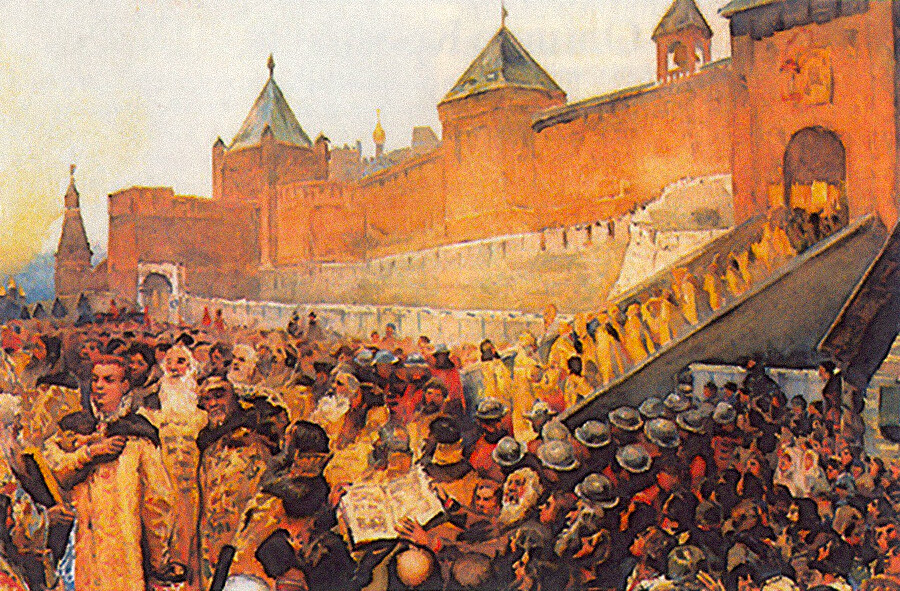
Klavdy Lebedev. False Dmitry entering Moscow on June 20th 1605, 1890s
Public domainAs a result, in 1605, ‘False Dmitry’ entered the Moscow Kremlin welcomed by the festive belling of the churches. Soon, Dmitry was crowned as the Russian tsar. And then, he married Marina Mnishek who was crowned as tsarina.
‘False Dmitry’ ruled Russia for less than a year. While rumors about the origins of this man spread around Moscow, his mother, who accepted him in the past, finally admitted that he was an impostor. Boyar Vasily Shuysky then arranged a conspiracy and the murder of ‘False Dmitry’.
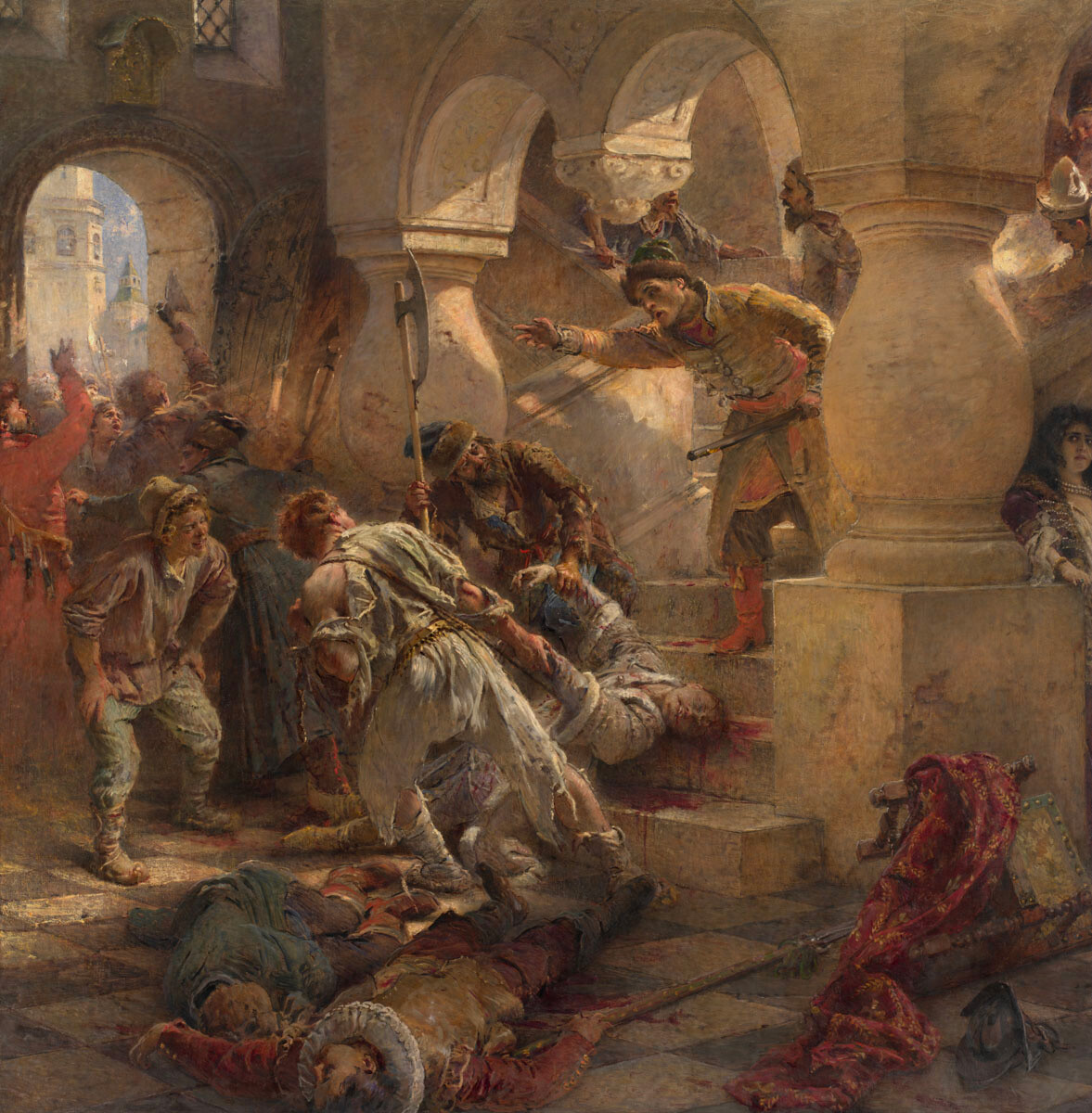
Konstantin Makovsky. The Murder of False Dmitry, 1906
Public domainThe body of the murdered man was taken all over Moscow and mocked. Some Muscovites were shocked and cried, because many accepted him as the tsar and believed in him.
And it was Vasily Shuysky who went on to become the next Russian tsar.
With the murder of ‘False Dmitry’, the Time of Trouble didn't end. In 1607, a new impostor appeared, calling himself Russian tsar, miraculously survived the murder in Moscow. His real personality was even more shrouded in mystery than the first one. Most likely, opponents of Shuysky were behind him.

Sergei Ivanov. In Time of Troubles, 1886
Public domainHe was also supported by the Polish King and Marina Mnishek recognized him as her husband. ‘False Dmitry’ and his army took city by city and ended up taking control of a huge part of the Russian state. He also built a giant camp and a wooden teremnext to Moscow, in the village of Tushino (that’s why ‘False Dmitry II’ is frequently called “the rebel of Tushino”).
However, all of his attempts to take Moscow brought no success. In 1610, ‘False Dmitry II’ was killed during a hunt.
There were several otherimpostors who called themselves ‘Dmitry’ and tried to encroach on power, as well as raising revolts. ‘False Dmitry III’ and ‘IV’ entered the political arena in 1611-1612, but none of them achieved serious success. Moreover, there were impostors pretending to be other people, like the son of Tsar Fyodor (which he didn't have).
The ‘Time of Troubles’, however, still wasn't over. A Russo-Polish war was ahead and only in 1613 did the new tsar Mikhail Romanov assume the throne.
Dear readers,
Our website and social media accounts are under threat of being restricted or banned, due to the current circumstances. So, to keep up with our latest content, simply do the following:
If using any of Russia Beyond's content, partly or in full, always provide an active hyperlink to the original material.
Subscribe
to our newsletter!
Get the week's best stories straight to your inbox